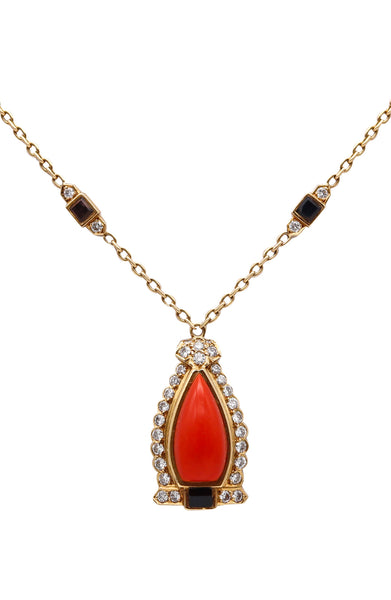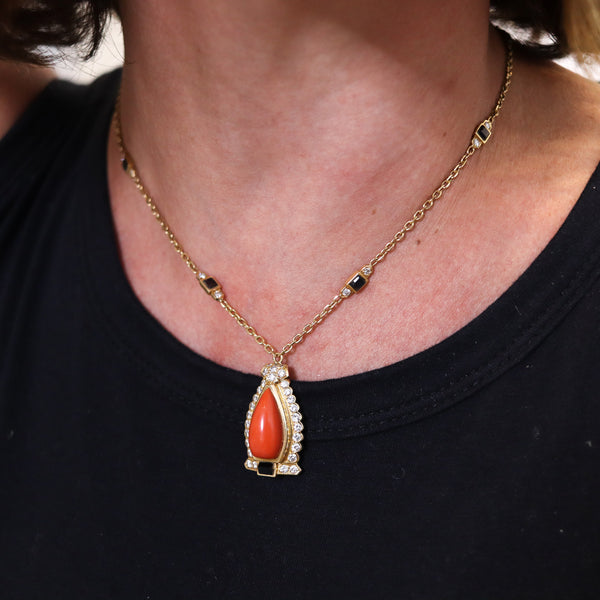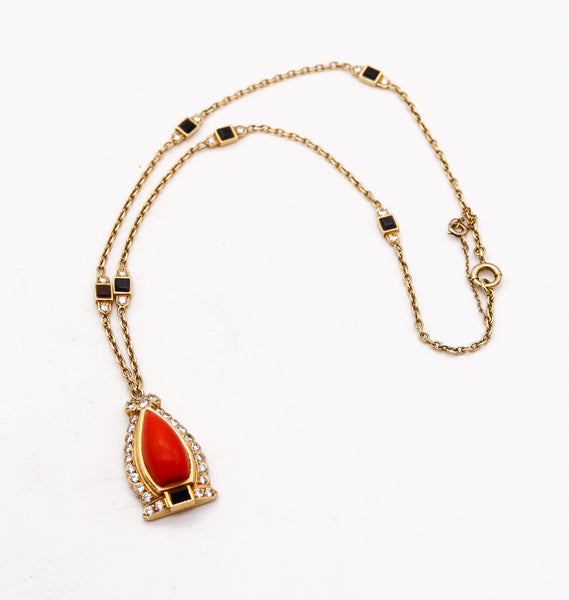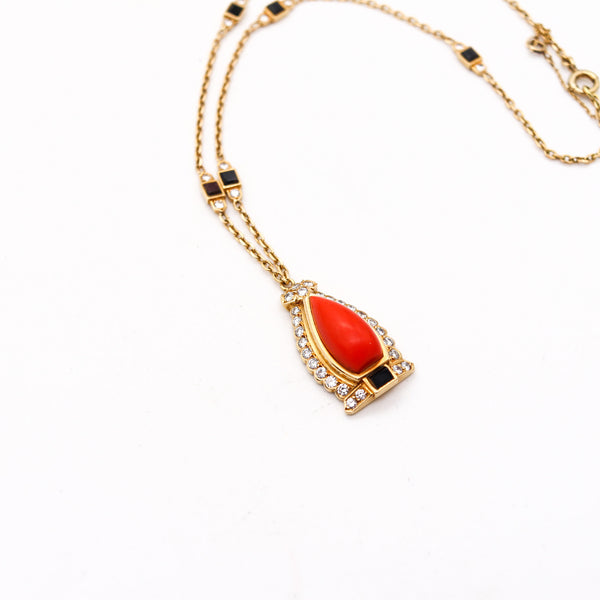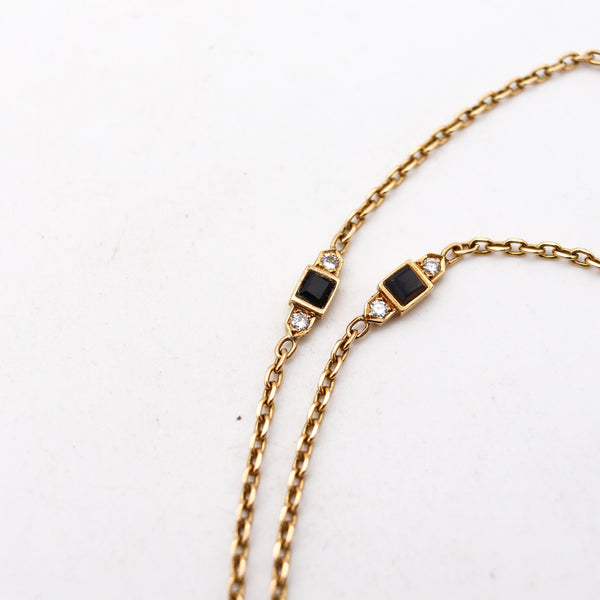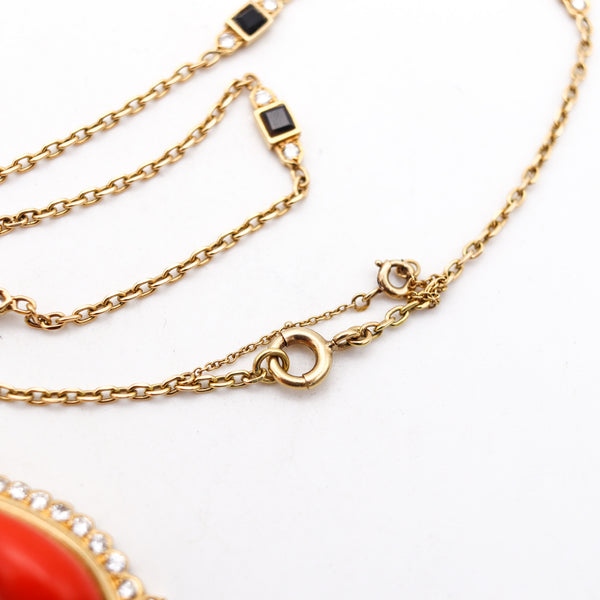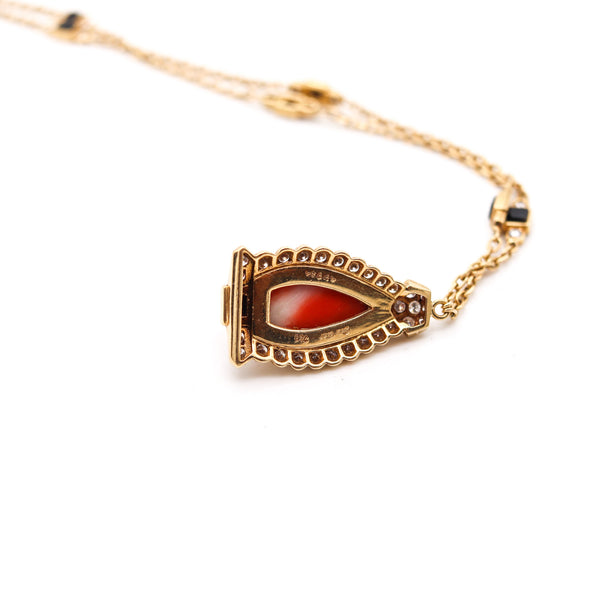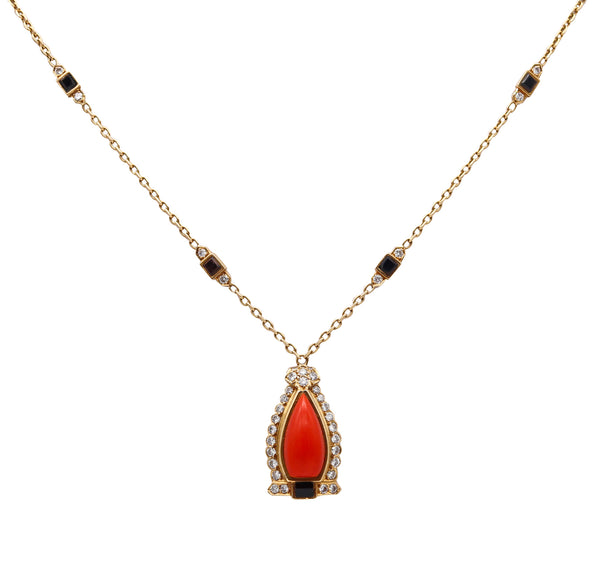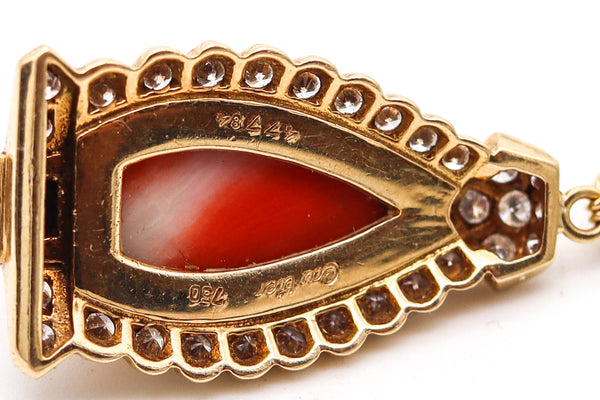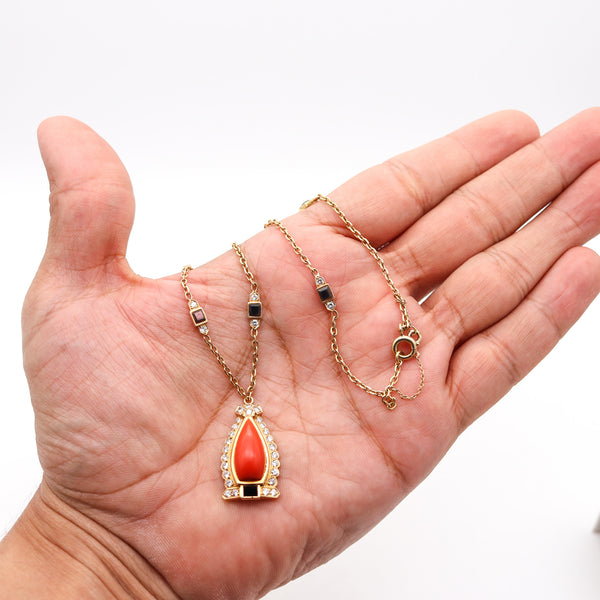CARTIER Paris 1940 Art Deco Necklace In 18Kt Gold With Diamonds Coral & Onyxes
A necklace designed by Cartier.
Beautiful colorful V shaped necklace, designed in Paris France during the late art deco period, back in the 1940. The necklace was crafted by the jewelry house of Cartier in solid yellow gold of 18 karats with polished finish. It s fitted with double stations chains and a decorative drop pendant. The jewelry piece is embellished with a very fine assortment of forty-nine natural earth mined gemstones such; white colorless diamonds, black onyx and Italian red coral. A spring security ring lock is Installed with another secondary double chain for extra safety.
Diamonds: Mounted in flush settings, with 41 round brilliant cut diamonds, 2.05 carats, white colorless F color, VS-2 clarity.
Coral: Mounted in a bezel setting, with 1 cabochon pear cut (16 x 9 x 6 mm) of a natural Italian red coral of about 6.75 carats.
Onyx: Mount in bezel settings, with 7 fancy cabochon square cuts of natural black onyx, with 2.10 carats.
Birthstone: Coral for the month of April
Weight: 16.95 Grams, (10.87 Dwt).
Length: 16 Inches, (40 Cm).
Measurements: The dangling drop element is 30 mm by 17 mm (1.18 x 0.67 Inches).
Hallmarks Stamped with French marks, the maker's mark, the eagle head for the assay and guarantee of the 18 karats gold, the five-digits serial numbers and signed, "CARTIER .750 47784".
Cartier
The move to the rue de la Paix coincided with a period of extraordinary economic growth and affluence in France and the world. Cartier was also growing and expanding and had started to shift their emphasis from retailing to design and manufacture. Although they produced a small number of pieces in the Art Nouveau style, Cartier paid scant attention to the movement. They made their distinguishing mark in pioneering the use of platinum in creating the delicate and graceful Garland style that came to be associated with the Belle Époque. The discovery of the great diamond deposits in South Africa in the late 1860’s engendered the popularity of extravagant diamond jewelry. The technical advances in the manufacturing of platinum enabled designs of great intricacy, strength and flexibility such as found in the spectacular résille designs of Cartier. (See Edwardian Jewelry: 1901-1915). Cartier marked the beginning of the twentieth century by opening branches in London and New York, where their wealthiest and most dedicated clientele resided. The 1902 coronation of Edward VII occasioned a large number of commissions from England’s leading families. Records indicate that Cartier produced twenty-seven tiaras alone for the coronation and the event was instrumental in convincing the firm to seek a permanent presence in London. Indeed, by 1904 they had achieved their first of fifteen royal warrants being appointed official purveyor to the court of King Edward VII. The London branch came to thrive under the tutelage of Alfred’s youngest son, Jacques Cartier, establishing London based design and manufacturing workshops. Opening a Cartier store in New York was a natural progression as many of America’s wealthiest families and business magnates had been traveling to Paris for some time to purchase their jewels from Cartier. By 1906 Alfred had largely retired and Louis and his brother Pierre operated the Cartier business jointly. One of their first major decisions was to establish a New York presence and workshop in 1909 under the skilled direction of Pierre. Indicative of his business skills, Pierre famously secured Cartier’s present location, an elegant Beaux-Arts mansion at 653 Fifth Avenue, from industrialist Morton F. Plant in 1917. The building changed hands in exchange for $100 and a double strand of natural pearls, admired by Plant’s wife and valued at one million dollars, the asking price for the mansion. While the Fifth Avenue location remains priceless to the firm, when the pearls came up for auction in 1957, they fetched a mere $170,000. (From Lang's with thanks).
Edwardian Jewelry
This Period was during the King Edward VII, after whom this period of jewelry history is named, reigned over England for only nine years, yet the style of jewelry known as “Edwardian” was created roughly between 1890 and 1920. Edwardian-era rings tend to be larger, opulent pieces, and stacked ring designs were popular. The metal surfaces of the rings were often diamond-encrusted for additional shimmer. Each of these rings is a work of art, showcasing a bygone era of grace, elegance and the royalty the Edwardian era is named for.
Collateral: It is accompanied by the original Cartier fitted presentation jewelry box.
Condition: The overall condition of this piece is excellent. Beside the little normal wear, there is no damage to the gold or platinum. The 49 gemstones are secured in the settings. This jabot has been carefully inspected to guarantee the condition and the authenticity.
INVENTORY REF: N060824ONNM/.4074











